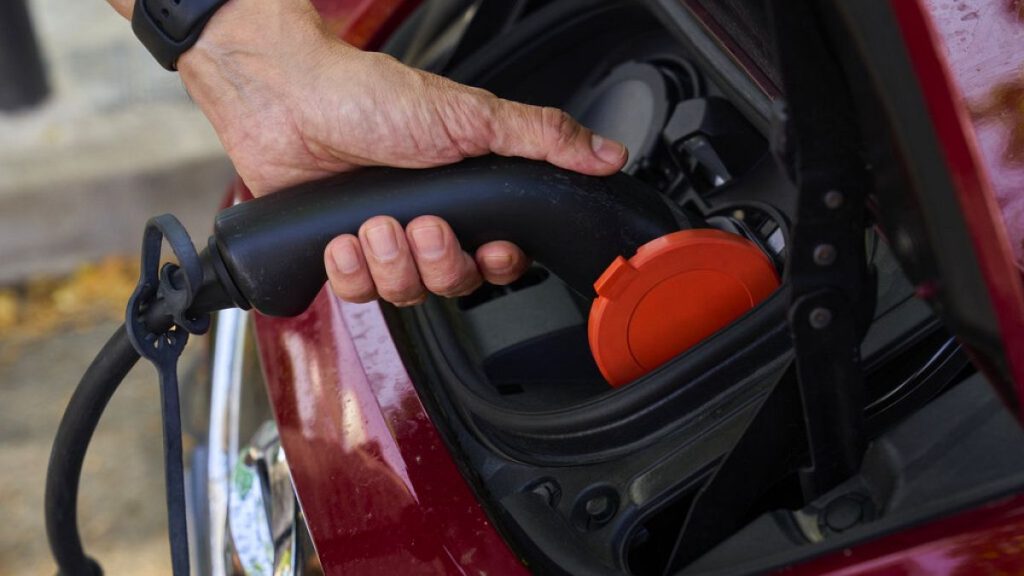AMG Lithium has opened Europe’s first lithium refinery in Bitterfeld-Wolfen, Germany, with the aim of producing enough lithium hydroxide for 500,000 electric cars per year. The refinery was built in just over two years at a cost of approximately 140 million euros. Most of the plant’s lithium will be sourced from Brazil, with plans to eventually incorporate lithium extracted from European mines in countries such as Portugal and the Ore Mountains. The facility is expected to produce 20,000 tonnes of lithium hydroxide annually, which is a crucial component in the production of electric vehicle batteries. The demand for lithium is increasing due to the global shift towards green energy, prompting the EU to propose a Critical Raw Materials Action Plan in 2020 to reduce Europe’s reliance on external sources of supply.
Lithium-ion batteries have become the go-to choice for most hybrid and electric vehicles, primarily due to their performance and range capabilities. Managing Director of AMG Lithium, Stefan Scherer, highlighted the superiority of lithium-ion batteries, stating that they are “simply unbeatable” for achieving the desired performance and range when driving electric vehicles. The refinery’s strategic location in Bitterfeld-Wolfen will play a pivotal role in meeting the rising demand for lithium hydroxide in Europe’s growing electric vehicle market. As the automotive industry shifts towards more sustainable energy sources, the demand for lithium and other critical raw materials is expected to increase further, making facilities like AMG Lithium’s refinery crucial in securing a stable supply chain for electric vehicle manufacturers.
The construction of Europe’s first lithium refinery marks a significant milestone in the continent’s efforts to reduce reliance on external sources of critical raw materials. By vertically integrating the production of lithium hydroxide from raw materials sourced both locally and internationally, AMG Lithium aims to establish a sustainable supply chain for electric vehicle manufacturers in Europe. The refinery’s capacity to produce enough lithium hydroxide for 500,000 electric cars per year demonstrates a commitment to supporting the region’s transition to green energy. As the global demand for electric vehicles continues to rise, the availability of lithium and other key materials will be critical in meeting the growing needs of the automotive industry while reducing environmental impact.
The successful operation of Europe’s first lithium refinery reflects the growing importance of sustainable energy solutions in the automotive sector. As countries around the world strive to reduce carbon emissions and combat climate change, the demand for electric vehicles powered by high-performance lithium-ion batteries is expected to increase significantly. AMG Lithium’s investment in the construction of the refinery demonstrates a forward-thinking approach to meeting this growing demand and supporting Europe’s transition to green energy. By producing lithium hydroxide in-house, the refinery not only ensures a stable supply for electric vehicle manufacturers but also reduces the region’s reliance on imports from external sources, contributing to the EU’s broader goal of achieving energy independence.
The establishment of AMG Lithium’s refinery in Bitterfeld-Wolfen represents a key step towards strengthening Europe’s position in the global electric vehicle market. By producing lithium hydroxide domestically and utilizing resources from European mines, the refinery supports the EU’s Critical Raw Materials Action Plan and reduces the region’s vulnerability to supply chain disruptions. The facility’s production capacity of 20,000 tonnes of lithium hydroxide per year is a significant contribution to the growing demand for electric vehicle batteries in Europe, further solidifying the continent’s position as a leader in sustainable transportation. As electric vehicles become increasingly popular among consumers, the availability of locally sourced lithium hydroxide will be instrumental in accelerating the adoption of clean energy solutions and reducing greenhouse gas emissions in the transportation sector.


